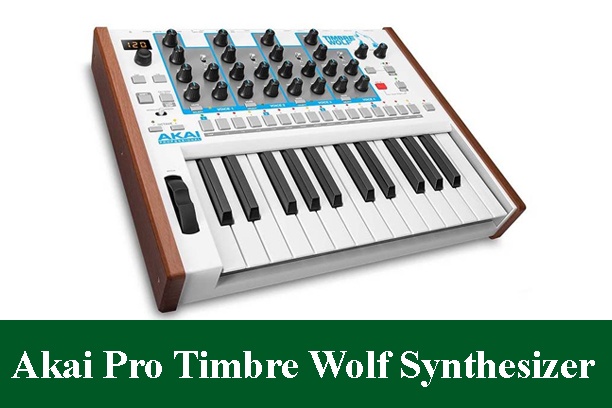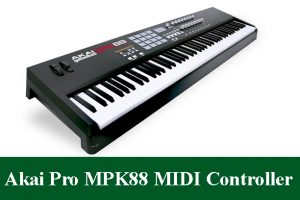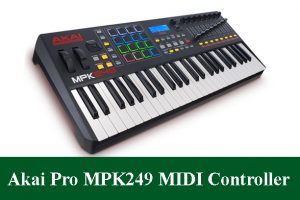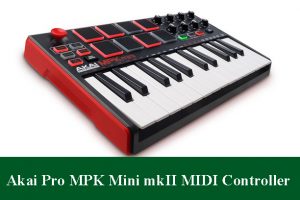Akai Professional Timbre Wolf Analog 4-voice Polyphonic Synthesizer Review (Updated)
Recently, it appears just as Akai has been truly pushing their simple synth contributions to the following dimension. The Rhythm Wolf was the initial phase in this procedure; Akai manufactured a drum machine that separated the network because of its absence of profundity in the tonality division, and additionally the seemingly off key bass synth module.
All things considered, the completely interesting sound of the machine combined with the strong construction and reasonableness made it an exceptionally charming offer for those searching for that kind of thing.
Presently, Akai is back with the Timbre Wolf 4-voice simple synth, a response to the developing sub-$500 equipment synthesizer showcase. I got an opportunity to invest a few hands-on energy with the gadget, and I left with bounty to like about it, and also a couple of staying indicates that I feel require be noted.
All in all, at last, is this the correct synthesizer for you? Does it meet expectations? All things considered, how about we discover.
Design and Overall Quality
The main thing that emerged to me about the Timbre Wolf’s design was the construction quality. The little touches truly sparkle on this one, including metal framing, genuine wood end tops and a shortsighted and clean interface. The back of the gadget accompanies pretty much all that you could need in a synth like this: a principle out, singular voice yields, headphones, MIDI In/Out/Thru, USB MIDI and door I/O for timing the sequencer.
Another feature that emerged promptly to me was the exceptional, autonomous 4-voice engineering. This is straight out of the playbook of the old Korg Mono/Poly machines, permitting control of the oscillators exclusively and opening up a great deal of inventive potential all the while.
The setup here is somewhat extraordinary, however, because of the way that each voice is in reality its own smaller than expected synth. An incorporated four-track sequencer can control any (or all) of the voices voluntarily, making an open door for special furrow boxing and tone creation that goes beyond the ordinary layering strategies on other comparable units, for example, the Korg Minilogue or the Arturia Microbrute.
Combination Engine
The four voices on the Timbre Wolf’s motor are similar smaller than expected synth components found in the Rhythm Wolf, however with one noteworthy enhancement; the majority of the voices are tuned in to one-another. Akai has even gone so far as to incorporate a voice-calibration function that empowers retuning, if the voices float away after some time.
You can tell they took the input on the Rhythm Wolf truly, and incorporated this as a stopgap to guarantee that doesn’t come up here. From what I played, the tuning disparity between the voices was irrelevant; unquestionably well inside industry-standard breaking points. It’s anything but difficult to overlook that numerous exemplary monosynths experienced tuning issues frequently, and this is something that Akai has unmistakably been working determinedly on.
The synth itself can be played in both mono and polyphonic modes, and exchanging between the two is a flat out breeze. The polyphonic setup works exceptionally well, and the majority of the diverse layers and voicing’s consider some extremely intriguing surfaces to be made.
That being stated, I was significantly baffled with the absence of a savable preset function here it appears as though a touch of an oversight for execution disapproved of players, and one that could hurt the longevity of the gadget over the long haul, given its context available.
Consider that both the Arturia Microbrute and the Korg Minilogue both have this feature.
Playing the synth feels incredible, with the semi-weighted plastic keys responding pleasantly to the touch. I found that they had quite recently enough protection from feel considerable, however insufficient to be a disturbance when playing quicker entries and twists.
The amalgamation motor itself features a solitary square oscillator that bolsters into a lowpass resonant channel, which at that point prompts a rot slope envelope that can be separately connected to the amp and in addition the cutoff. By and by, this setup takes into account some flawlessly stacked creations, and in addition some completely huge and moaning leads.
The primary disadvantage here is fixing specifically to the implementation Akai utilized for the physical controls. Every oscillator tuning handle only covers a constrained detuning range. This adds up to one semitone either up or down, constraining the unison mode to some degree practically speaking. Another little objection is the absence of an octave switch. I feel this would have made a ton of chances for a considerably increasingly exceptional assortment to the general sound of the synth.
The uplifting news is, none of these downsides feel especially bargain pounding inside the more extensive image of the synth itself. A lot of synths had out and out peculiar thoughts and designs, a couple of which prompted some incredible sounds. The extraordinary structure and nature of the Timbre Wolf’s blend motor takes into account all that could possibly be needed profundity to lose yourself in for a significant long time, and certainly fits both production and live execution in many, numerous ways.
Competition
The Timbre Wolf has various rivals in its $500 value section, a considerable lot of which complete a couple of things that it doesn’t. Presumably the most remarkable of these eventual the Arturia Microbrute, an equipment synth roused by the great Minibrute synthesizer.
The Microbrute has preset sparing, a progressively strong advance sequencer, and an increasingly flexible sound by and large, at the end of the day, the two items fill genuinely unique needs, and could even be complimentary to one another in a few regards.
The 4-voice design of the Timbre Wolf truly enables it to emerge among different synths for it’s bass tonality and thick, fulfilling feel. While different synths may “accomplish more”, what the Timbre Wolf does, I feel it is unrivaled in.
Sequencing and MIDI
The Timbre Wolf has a four-track sequencer that appears to be genuinely oversimplified and easy to understand, however I didn’t get the opportunity to invest very as much energy with it as I would have preferred.
The uplifting news is, the thing that brief period I spent with it, I had the capacity to get the hang of things close to playing around with the gadget. The sequencer works in both monophonic and polyphonic modes, and takes into account every short synth to have its very own succession.
This implies making complex examples can be very straightforward and exceptionally fun in only a couple of minutes. You additionally have the option of changing over to unison mode, where every one of the four voices can “hook” onto the initial ones grouping; I had a considerable amount of fun messing around with layered sounds in this mode.
The terrible news, at any rate for those that like further altering functionality, is that there isn’t much else in the method for altering on the gadget. There’s an A/B version selector, and they can be anchored together for a joined aggregate of 32 stages, yet a few clients may even now locate this constraining. Personally, I think this synth is more qualified to execution, and also use in a studio environment, so I don’t see this disadvantage being excessively critical to bunches of clients.
The MIDI functionality is by all accounts truly direct, however I should note I couldn’t utilize it amid my hands-on time with the synth. It would seem that it exchanges note and succession information through MIDI, and it should work faultlessly with pretty much any DAW, as both an ace and a slave.
From what I’ve found in recordings, one potential drawback is that it doesn’t appear just as you can run the Timbre Wolf polyphonically through a solitary channel. Analysts have mentioned that the ace channel will only ever play one voice at any given moment; something that a few clients may discover very irritating, however others probably won’t think excessively profoundly about.
Pros
- Four-voice polyphonic union.
- Quality and fun (if fairly restricted) four-track step-sequencer.
- Strong construction and playing feel.
- Incredible bass tonality.
Cons
- No polyphonic MIDI information on a solitary channel.
- No savable presets.
- Absence of profundity in altering devices.
- Not exactly as adaptable overall as I’d like it to be.
The Bottom Line
Like most synths of its class and size, I can’t promptly prescribe this to be your fundamental instrument in any setting. The functionality, while entirely exceptional in numerous regards, essentially doesn’t consider enough inventive instruments to warrant full-time use. All things considered, I feel that this synth would be a great addition to a rack or a studio setup, and I’d dare to figure that most clients examining this machine would search for a beneficial gadget in any case.
The 4-track sequencer has quite recently enough functionality to be deserving of experimentation, without truly having the capacity to do much else. As I would like to think however, that is truly what Akai expected to do with this person make it right away playable regardless of anything else. More profound functionality can be had somewhere else, and what the Timbre Wolf does, it does unfathomably well.
Primary concern
The Akai Timbre Wolf is a novel and idiosyncratic polysynth that will make a brilliant addition to a set up apparatus or studio setup, including profound, layered bass tones and an exploratory sounding sequencer setup.
Conclusion
The strong construction and attention to elaborate detail, the convenience and instinctive sequencer, and the strong control and sound variations make this an overall hard worker of a simple synthesizer. At the point when each of the four voices are locked in, you’re ready to make some genuinely textural and huge sounds, and when explored different avenues regarding, I discovered it began to assume a personality all its own. I saw more than whatever I was beginning to select a specific “Sonic Signature” for the gadget, choosing subtleties that I haven’t possessed the capacity to reproduce with some other synth since.
For this commentator, that more than compensates for the disadvantages present all through the diverse zones of the Timbre Wolf’s design.





